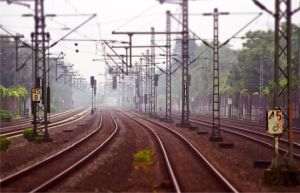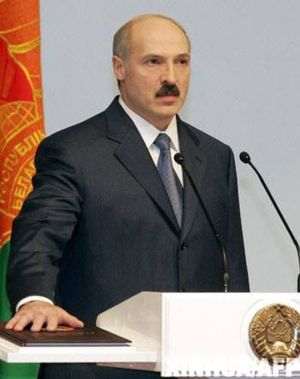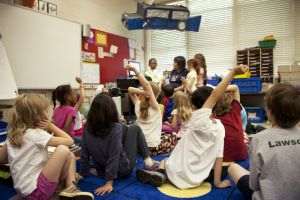The leu yesterday reached a historic low against the Euro, 4.6495 lei/Euro, up 1.05 over the previous meeting, marking the fourth day where the exchange rate was above 4.6 lei.
Adrian Vasilescu, strategy consultant at the National Bank of Romania, thinks that the leu is weakening to support the balance of payment, which is seeing a deficit of 8.2 billion Euros on the goods side, in September.
He said: "There are four days in which the exchange rate for the Euro has exceeded 4.6 lei. Over the last few days the exchange rate has dropped by one ban. Perhaps it is a simple coincidence the fact that on November 8th was approved the Emergency Ordinance of the Fiscal Code and it was also on that day that the Euro rose past 4.6 lei.
It is never correct to draw a conclusion about the trend of the exchange rate, after just a few days.
Thus, I propose that we review a different threshold, to draw conclusions, respectively that of 4.59 lei. That level has been tested several times, but it was reached on August 29th, and since then, the exchange rate has stayed at that level until September 29th, and then there have been some fluctuations, until November 8th, when it rose to 4.61 lei.
We have seen such depreciations before, because we are going to comment the exchange rate of 4.59, because it is a longer stage".
The main cause of the moves in the exchange rate is the evolution of the balance of payments, says Mr. Vasilescu: "11 indicators lie behind the exchange rate, including inflation, the GDP, the interest rate, economic efficiency, unemployment, but the most relevant indicator is the balance of payments".
The current account of the balance of payments has seen a deficit of 4.191 billion Euros, in the first nine months of this year, up 45.27%, compared to the similar period of 2016, according to data of the National Bank of Romania (NBR), published yesterday.
On the goods side, we have a deficit of 8.2 billion Euros, according to NBR data.
The deficit of the trade balance in the first nine months of 2017 has reached 8.8 billion Euros, 1.9 billion Euros higher YOY, according to data published last Thursday by the National Statistics Institute.
According to Mr. Vasilescu, the question is who will make up the deficit of the balance of payments: "One part will be covered through European funds, who may or may not come, another, out of capital inflows, which are extremely rare, meaning that a major portion is balanced through the exchange rate, which is weakening, in order to support the balance of payments.
That is where I see the main cause of the depreciation of the leu".
According to Adrian Vasilescu, we had an increase in consumption based on wage increases and the low interest rates: "Under these circumstances, we are resorting to imports, even the food imports are rising, and the balance of trade needs to be stabilized".
The official of the NBR states that the Central Bank is monitoring the foreign exchange market very carefully, but it has no target for the exchange rate, but it always targets financial stability, which means ensuring the stability of the currency market: "How does it do that? Through assuagement, through all the means it has at its disposal.
Sometimes, the NBR can just rattle off the currency reserves and the market calms down, because the players in the market know that the NBR is the most powerful player and can at any time make the market go the other way if they go crazy. «Crazy» means that the depreciation or the strengthening of the leu is fictitious. The National Bank usually intervenes with every means in such cases".
When asked if that is the case in the present, Adrian Vasilescu responded: "This time it hasn't gone crazy. The exchange rate has moved 4 bani in 4 days".
Analysts think that there is a concern on the currency market, amid the fiscal measures adopted by the Government espite the criticisms of businesspeople and unionists. To that, it also adds the analysts, inflation, as well as the trade balance and the capital flows which are very low.
The euro/leu exchange rate has reached a relatively low balance, said on Thursday, the NBR governor Mugur Isărescu said, and mentioned that the evolution of the leu is tightly connected to the trade deficit.
The level which the exchange rate has reached represents a disaster for exporters and importers, says Mihai Ionescu, the president of the Romanian National Association of Exporters and Importers (ANEIR). He said on Wednesday, that even though, for a moment, exporters should be happy that they earn more, nevertheless, given that 2 thirds of exported products are made using imported materials, that exchange rate will remove them from the international competition.
Lazea: "The criteria concerning deficit, inflation and interest rates, in danger when it comes to the adoption of the Euro"
The criteria for the adoption of the Euro pertaining to the budget deficit, inflation and interest rates over the long term are in danger, said Valentin Lazea, chief-economist with the National Bank of Romania (NBR) and secretary of the Committee for the preparation of the move to the Euro.
"The fiscal and salary relaxation policies that began in summer of 2015, and emphasized between 2016 and 2017 by governments of various political orientations, such relaxation policies are making it difficult to meet the nominal criteria. The biggest overshoot danger is the deficit of the consolidated budget, which is at the level of 3% of GDP and which, according to the forecast of the European Commission, is at risk of reaching 3.9% next year, unless measures to mitigate that aren't taken", said Lazea, quoted by Agerpres.
According to the quoted source, it is not only the criterion of the consolidated budget deficit that is in danger.
The NBR official further said: "There are two criteria which we are at risk of failing to meet starting next year because of these pro-cyclical policies. These are the criteria referring to inflation, that harmonized consumer price index, and the one concerning the long term interest rates. The inflation criterion is a moving target which, at the level of September, was 1.5 percentage points above 0.4%, which is the median of the three best performing states, in other words 1.9%. Romania had that criterion met in September. Let's assume this inflation criterion will be around 2% next year, except us, based on the current inflation growth forecast will exceed it in March 2018. Even if luckily for us, the criterion were to go to 2.5%, it would also be surpassed by mid-2018 probably, according to our forecasts".
Lazea: "A potential submission of the bid to join the Eurozone would be rejected from the start, in a nearby future"
According to Mr. Lazea, a potential submission of the application to join the Eurozone in the near future would be rejected from the start: "The continuation of the fiscal and salary relaxation in 2018 will endanger not only the meeting of the nominal convergence criteria, but also the compliance of the dashboard indicators monitored by the European Commission in the European Semester. If in 2014 and 2015 Romania used to meet 13 out of 14 indicators of the dashboard, tied with the Czech Republic and Poland, but much better than all the Western European countries, Romania currently meets 12 criteria, because last year the real estate price index passed the 6% threshold, and it will soon only match 11 criteria, because the index of individual labor cost will exceed 12% this year. In this context, an application to join the Eurozone in the near future would be rejected from the start".
According to him, the real convergence means concrete things.
"Many people, when they hear of real convergence, are either thinking strictly of the GDP per capita, which is not enough, it is just a small segment, or is a new jargon imposed by Brussels, a kind of Brusellese, which doesn't mean much. This real convergence means very concrete things. The real convergence involves the growth of the potential GDP which in turn involves structural reforms that would maximize the components that are part of the potential GDP, namely capital, workforce and total productivity of factors", the NBR official explained.
Lazea stressed that only an economic growth based on these three components - capital, labor force and total productivity - is healthy and sustainable in time.
"An economic growth based only on fiscal, salary and monetary stimuli is not sustainable and sooner or later can start reversing. It is fully understandable this ambition of burning through steps and getting the GDP per capita as close as possible to the rest of Europe, but if this skipping of stages is done in an unsustainable manner it will be a like a flash in the pan which lasts just a little and then goes out", he said.




























































